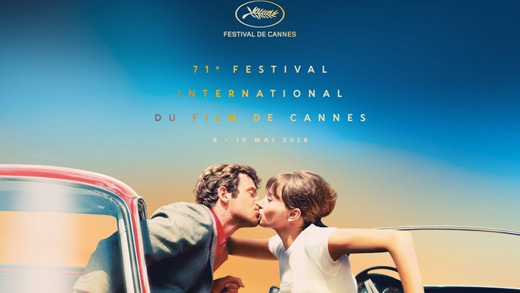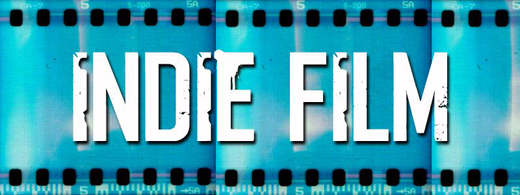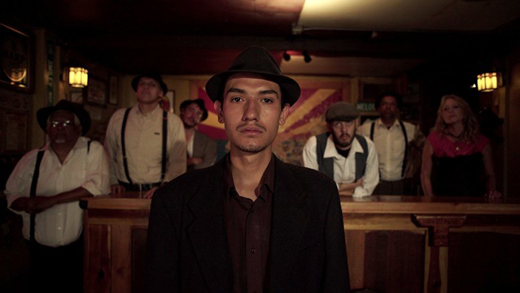VanRamblings has always loved the cinema, from the time we held our younger sister’s hand to keep her safe, while on our way to the Grandview Theatre, just south of 1st Avenue on Commercial Drive on the east side of the street, every Saturday in every month throughout 1955 until near the end of August in 1958, when our family moved to Edmonton, where our movie-going regimen was kept up — alone this time, on the bus at the age of eight heading downtown during the most unforgiving of 40-below winter nights cascading towards the Rialto Theatre to see the latest Hayley Mills film, for we were in love with Hayley Mills and never, ever missed one of her films … through to the mid-1960s when we were once again resident on Vancouver’s eastside, just north of Semlin Drive & 1st Avenue, in the neighbourhood where we were raised, and where we lived for most of our first 18 years of life, through until … now, to this day, when this year we celebrate 50 years as a published film critic, and ardent lover of film.

Not for us, the big blockbuster films that have dominated movie landscapes for most of the past three decades. No, we’re a ‘window on the world’ foreign film aficionado, as Rocky Mountaineer President and founder Peter Armstrong will tell you if you ask him, and we love small, lower-budget independent films to near distraction, and we love reading and writing about the film festivals that dot the cultural landscape throughout the year, from January’s Sundance Film Festival — founded by Robert Redford in Salt Lake City in August 1978 — to the Berlin “Berlinale” Film Festival in February, to March’s annual, Austin, Texas-based South by Southwest (SXSW) Film Festival, followed in April by Robert DeNiro’s Manhattan-based Tribeca Film Festival — and this next month, the grand mama of them all, the prestigious and much-anticipated Cannes Film Festival, which has taken place on the leisurely French Riviera every year since 1946.

As we write above, VanRamblings loves independent — or, indie — film. But what is indie film? Hang on to your hat, because here we go …
Indie films are movies produced with a low budget, most often by small, boutique production companies, and produced for less than $20 million.
Originally, the defining quality of indie media (film, music, publishing, etc.) was that it was produced outside of the traditional systems of production. So in film, for example, movies produced without the support of the major Hollywood studios would be independent films, or “indies” for short.
After a few decades of independent media, however, aesthetic patterns and themes have emerged that make “indie” more of a style or genre label.
Confusing matters even more, in recent years the six major Hollywood studios — Fox, Paramount, Warner, Sony, Universal, and Disney — have brought indie films in-house, with Disney acquiring Miramax, Paramount (Vantage), Sony (Classics), Fox (Searchlight), Universal (Focus, Working Title), and Warner (New Line, Castle Rock), the major studios competing each year for prestigious Oscar attention with their much-ballyhooed “independent” art house releases, most of the films acquired by the studios but not financed by them, from many of the film festivals mentioned above.
With indie films, the director’s approach is paramount, these auteur films creative, artistic and personal in tone, with subject matter that reflects the lives of everyday people, or as is sometimes the case, the marginalized persons or communities within our cities, provinces or states; indie films also often take on forbidden subject matter considered to be taboo by conventional society. Indie films will more often than not use music sourced from bands or indie music groups or artists, rather than employ original orchestral scoring to aid in the telling of the film’s story.
At the most recent Oscars ceremony, as the latest clutch of arthouse films — including Darkest Hour, The Shape of Water, Call Me by Your Name and Three Billboards Outside Ebbing, Missouri — were feted throughout the awards season, indie films grappled with Hollywood’s blockbuster addiction, and the new challenges presented by Netflix and Amazon.
While the big six Hollywood studios made 113 movies last year, taking in $11 billion in domestic box office and another $14 billion internationally, a record number of smaller-budget films were released from the beginning of January to the end of December 2017, most — but not all — of the indie films released onto silver screens at a multiplex near you.
Why “not all”? Where did the “other” indie films secure release?
With 80 independent films currently set for production at Netflix, none of which will be given a theatrical release, in 2018 if you want to watch what might be a few of the most provocative films of the year, films made by some of the most prominent names in filmmaking, you’re going to have to stay home, or watch the latest Netflix “indie” on your smartphone or tablet.
Over the past couple of years, Netflix’s dominance of streaming platforms has proved game-changing for Hollywood, as they work to rewrite the film and TV universe to match its model. For anyone who cares about film and its future, that may be a scary thought, or sound potentially threatening.
But is it really?
Today, most studio greenlight conversations are at their most reductive: “Can we sell this in China?” By contrast, Netflix doesn’t care what “plays” in China, given its utter lack of presence in the country, and seeming lack of desire to gain a presence in the countries that comprise east Asia.
For now, the Netflix model injects a deep-pocketed force in the indie mix, their massive, near global reach casting a wide net, placing Netflix at the forefront of the wave of alternate narrative forms — allowing producers to successfully argue for niche-audience titles that might struggle within the theatrical model — while challenging the conventional distribution model.
As we write above, the early year annual Sundance, SXSW (South-by-Southwest), Tribeca and Cannes film festivals remain primary sources for the discovery of new directors and the first-rate indie films they take on the festival circuit, films that tend to garner critical and awards recognition at the end of each calendar year and, increasingly, films that are produced and screened only on Netflix. But not always. Cinema is not dead, yet.
Next month, VanRamblings will write about all the indie films that you can screen within a darkened, air-conditioned movie theatre, in this sure-to-be-sweltering upcoming summer season. In the meantime, look for …

Bisbee ’17. A Canadian première at next month’s 17th annual DOXA Documentary Film Festival, screening only once (so you’ll want to get your tickets now!), on Sunday, May 13th, 6pm at SFU Goldcorp Cinema, filmmaker and writer Robert Greene will be in attendance to present his latest film, and participate in a post-screening Q&A, responding to audience questions about a film that has variously been described as the “most talked-about documentary film of the year, an audacious, arresting dream-like mosaic”, Greene’s film focused on a traumatic 1917 immigrant deportation, when an Arizona sheriff — backed by union-busting thugs hired by the mining companies — rounded up striking workers, exiling them to the New Mexico desert … never to be heard from again. Greene’s film, while confronting an ugly truth, discovers a measure of healing and solidarity. See Bisbee ’17 next month at DOXA, or miss out on it forever.

C’mon back next Wednesday for more DOXA Documentary Film Festival coverage, which will fit nicely into our ongoing Vancouver Votes 2018 coverage. We’ll look forward to seeing you back here next Friday for feature coverage of DOXA 2018, and an interview with the tough, the brilliant, the wonderful, our friend, Selina Crammond, who this year succeeds the near irreplaceable Dorothy Woodend, as the festival’s new Programme Director.